– Hi, my name is Mary Pardee. I am with UW-Extension Cooperative Extension. I am the 4-H Youth Development Educator here in Barron County. I would like to welcome you tonight to the Barron Area Community Center. Our program tonight is on Wild Rice History, Biology, and Harvest. Our presenter is a co-worker of mine in UW-Extension Cooperative Extension. He is our Regional Natural Resources Educator, and he is located at the Spooner Agricultural Research station. Please help me welcome John Haack.
[applause]
– Thank you, Mary. Welcome everyone. Thanks for coming tonight. And as Mary said I’m going to run through a little bit of the history of wild rice particularly in the northwest part of the state here. We’ll touch on the biology, discuss harvest and then I’d like to add a little bit about processing and the rice itself. So with that, let’s start on the history of wild rice. In this part of the state, the Ojibwe culture lives here now, but originally they called themselves the Anishinaabe and according to the teaching of their elders, a long time ago when the Anishinaabe lived on the coast– the east coast– they were instructed to move to the land where food grows on water. And after many seasons of travel as you can see on the map, they came a long way. They arrived in the Lake Superior/the Great Lakes area, and they moved inland to the lakes and rivers of Northwest Wisconsin, Minnesota, Michigan, and Ontario, where they indeed found food that grows on water. Manoominis what they called it, and that name means “wild rice.”
Since that migration, it’s become a major source of protein for them, a source of food. It’s an important part of the Anishinaabe– now we call them the Ojibwe or the Chippewa- a part of their culture, and their tradition– a major part of their stories, their anecdotal stories and their traditional stories. And they do call, the wild rice is called manominor manoominin their culture, meaning “good berry.” And still today, many Native Americans harvest- not only the Ojibwe, but other tribes in the state of Wisconsin, Minnesota, and Michigan harvest this rice as well. Before the Ojibwe/Anishinaabe arrived there was a long history of indigenous people living here, and we have archeological evidence that there was wild rice harvesting going on here at the time of Christ and in this part of the world. So it’s a long history of harvesting and gathering this plant and using this plant. The plant was so important- the rice was so important to the Anishinaabe/Chippewa and the Ojibwe that when they were making treaties with the United States government that it was written into the treaties- specifically written into the treaties- the 1837 Treaty was the early treaty written here- sometimes called the Pine Tree treaty. It was about the end of the Fur Age, when the fur trading and trapping was coming to an end. This part of Wisconsin was gearing up for logging. There was a lot of timber here, and they made sure to reserve the rice for harvesting this particular plant in their treaty.
They knew they were giving up some things- the secession of land was understood somewhat- but they wanted to make sure they reserved certain rights to harvest certain things. And wild rice is spelled out in all of these treaties. So very important for them. It was not only important for them, but it was also important for the fur trade that came before- the French, the English, and eventually the Americans. It was an important source of food that they learned from the Native Americans who were here, how to harvest and how to trade for it. It’s a very light product once it’s dried. It stores very well. It’s very adaptable to traveling across the country in canoes and rucksacks, and so forth and being stored. So very important. And still today this food that grows on water
(manoomin)
is gathered in a traditional manner by the Ojibwe who still live in Northwest Wisconsin. Wild rice is historically so important that there’s more places in Wisconsin and the Upper Midwest named after this plant than any other native plant that grows in this area. Some examples are locally the city of Menominee, the city of Rice Lake, Menominee County. We happen to be in a part of Barron County that was famous throughout the Upper Midwest for many, many years, for centuries because of Prairie Lake, just outside of Barron here. Prairie Lake was known as Rice Lake of the Prairie and a number of different names to the indigenous people. It was a great source of wild rice. It’s a 1,400 acre rice lake. It doesn’t have rice anymore, typical of the lakes that were used for hydro production or mill dams. The changing water level changed the history.
But a very important region in the state. So what is it exactly? What is wild rice? It’s one of two native greens that grow in North America. Maize or corn- many of us are familiar with- has become a commercialized crop. And rice is a grass. It’s in the grass family, and is also a grain. It’s an annual crop, so each year it grows from seed, and grows back to a tall plant that grows in the water. So it’s an aquatic plant. There are four species in the world: there’s two species in this state: southern and northern wild rice, there’s a species in Texas and a species in Asia.
The only one that’s harvested for food in the manner that wild rice is, is the northern wild rice that grows right here in Wisconsin. It prefers water depths of one-third of a foot to three feet. It likes soft sediments, and more than anything else, it really likes flowing water. Just a couple of aerial photos to give you examples of where it grows along the shore.
What we’re seeing here is the Yellow River outside of Spooner. And right here is where the wild rice likes to grow. In that one to three foot of water where there’s soft sediment, not high turbulence. There it’s growing. This would be a picture in August. Here it is in a lake by Siren, growing in the shallow water areas.
Again it’s aquatic grass that grows annually from seed. And it grows to the height which I’ll show you later. This wild rice can grow up to eight feet tall. So it’s an annual plant that grows very fast, very rapidly, and up to eight feet tall in one season. Here’s another shot of the Yellow River just in a different year. You can see how it’s really grown quite densely along this river. There’s just a little canoe path down the middle of the river here. And some open water here. Highly variable from year-to-year. Here’s another shot of a lake in Bayfield County with the Namekegon River coming through it.
Again flowing water is very important to bring it nutrients. The river exits here and this is all wild rice in this area along here and along the river on both sides. So it germinates annually in early spring in these soft sediments. In April and May it’s starting to germinate and grow. As an aquatic plant totally underground- totally underwater, pardon me. In June it floats on top of the water. It’s called the floating leaf stage. And this stage of the plant is highly susceptible to rapid water level changes that could pull it out. So it would de-root this plant, and we’d lose the crop that year. So it’s susceptible to flooding.
Later in the season it sends out tillers and shoots. In mid-July through about now it looks similar to this. This is the area leaf stage. The flowering stage is July through August. So right now it is beginning to flower. Here we have the male part of the flower that produces the pollen and up top is the female part of the flower.
So mature seed in August- that’s when we go out and harvest. We’re harvesting that mature seed the last week of August through maybe the second week, third week of September. We’re out there harvesting that seed when it’s dead ripe. Unlike the rice that’s in the genus Oriza that we harvest in the store.
Zizania, we harvest it when it’s dead ripe. So we go out there right when it’s ready to fall off- the wind is ready to knock it off- and that’s when we’re out there harvesting the rice. That’s the traditional time to harvest the rice. Here’s a picture of that floating leaf stage that I mentioned earlier. Very susceptible. It just looks like a grass floating on the top of the water. Area leaf stage comes shortly after, it sprouts, grows rapidly, looks like a grass growing in water. And here’s the flowering stage in July. We’re looking at the male flower down here and the female flower at the top. And then the end of summer in August, the male flower is already gone in late August and here the female has produced seed heads up here on the top of the plant.
A lot of seasonable variation, so throughout the season this is the same river that I’m going to be showing you here throughout the season this is what it looks like. Early spring. Later summer. And here’s harvest season. So high variability throughout the year. And then from year to year, there’s tremendous variability in crop. A lot of the literature suggests that it has a four-year cycle. One good year, two average years and one bad year in a four-year season. This is a lake in Bayfield County. This is not a good year for that lake.
Same lake, same time of year, completely covered with a few exceptions. So highly variable, and a long history of harvest. Manoominic/ manoominike is the harvest time when they harvest and it’s harvested still in the traditional way today. The traditional way is with push-pulls and knocking sticks. It sounds like you have to knock it hard, but you don’t, a little bit of misnomer there. “Light tapping sticks” they should be called, but they’re knocking sticks. One person in the front pulls because it can be extremely difficult to paddle through this, and a person in the back or the other end of the canoe uses these knocking sticks to gently tap the rice over the boat. So one stick goes out over the rice, the next stick taps the rice that is ready to fall- it’s dead ripe- into the boat. Switch sides, come over to this side, bring it over, gently tap it into the boat. And the knocking sticks in traditional culture are made out of white cedar.
To show respect for the sacred rice, the white cedar is fairly light. You don’t want to beat the plants. The plants ripen over the course of ten days to fifteen days. So if you go out one day you might harvest some, and come back two days later and harvest more in that same spot. So you want to be easy and gentle on this crop.
Just another shot of a harvester in the back. Here is an Ojibwe woman with knocking sticks, knocking the rice in a traditional birch bark canoe. Another picture, bringing it over the boat and gently tapping it. And, historically, prior to the 1900’s, they would actually bind the rice. So families would go out on these rice lakes.
They’d make an encampment on the edge of the lake. They would get out there with basswood strips and each family would have a unique portion of that rice that was agreed to that it was going to be theirs for the year. They would go out there and bind this rice with birch bark or basswood bark– the inner bark of basswood– and wrap it in a way that represented their family. And when it was time to harvest, the storms hadn’t blown it over. It was easier to harvest– not a lot of it fell into the water- they’d go back, untie it, bend it over, knock it into their canoes. This was their grocery store. They didn’t have options like we do today, so it was extremely important to them. They either made or break the year, if they had a good supply of wild rice. Later on in the fur trade, it was an important fur trading good. So they traded for all kinds of things.
Here’s a traditional harvester out in the rice. You can see the long pole. These poles can be up to 20 foot long. Traditionally they were tamarack, spruce, balsam, with a v- d branch on the end to get better purchase into that soft sediment. And here’s the knocker facing forward in this boat.
Timing is everything. As I mentioned, you go out when the rice is dead ripe, and it’s ready to fall. If a large storm comes the day before you are preparing to harvest, you may get nothing. The season may be gone if it knocks over the rice and blows it over. The timing is really strategically important.
Knowing where to go and when to go. Historically,the ricing chiefs would determine when it was time to start ricing. They would have an encampment on the shore, and an elder who’s very experienced in rice harvest would go out daily and check the rice. When it was time to harvest and was actually dead ripe, that’s when everybody was allowed to go. So they go back to shore. Announce that, everybody go out and rice. Now we replicate that a little bit in the way we regulate our harvest in the state of Wisconsin. Some of the lakes have seasonal openings, so some of them are date- regulated. Much of what we do today actually replicates what they did back in the day. Here’s a poler pushing me through the rice in a Burnett County lake.
As you can see the rice is quite tall, and quite thick. The poler tries to maintain an even steady pace as fast as the knocker can knock in whatever rice they’re in. So we would continue this for a day and maybe come back another day depending on the energy level. You want to go out when it’s sunny and the rice is drying- it falls better. And here’s the knocker on the other end of the boat bringing that rice over, and tapping it into the boat. I’m poling this particular canoe and there’s our knocker up front, just bringing it over, tapping it into bottom of the boat.
This as well is a Burnett County lake, not far from here, and average harvest rates- what kind of rice would come off an acre of rice if you could get it all would be 150 to 200 pounds, according to the literature. Ricers who are experienced and know what they are doing will take an area of rice like that and work it back and forth in parallel rows, rather than helter skelter knocking all the rice down. Then they’ll come back again several days later and harvest again. Here’s what it looks like in the bottom of the boat.
It’s very milky, very moist, still even though it’s very ripe. Here’s what it looks like on your feet. The awns in the outer case of the rice is very sticky. There’s bristles on it, and it sticks very well to socks.
[laughter]
Not a good idea to wear socks. Here’s the awn, that long awn coming off the seed head right here. The palea and lemna are the outer coatings of this particular seed, and it has very long awn, or beard, coming off of it. So the rice grain with the beard can be up to an inch and three quarters long. All that outer coating has to be removed before it’s ready to eat.
And historically the way they’d prepare this– after the harvest, they would dry it, and these are big sheets of birch bark out in the sun. They’re drying it for two reasons: one: so it can be parched and then further processed and two: there are a lot of insects in there. Wild rice is a rich source of nutrients to a lot of things including rice worms, a whole host of insects, and wildlife that uses it. So we’re drying it out to get rid of those insect pests. Traditionally they would actually put up a scaffold like this, three foot above the ground with bark from basswood or from northern white cedar. They’d start a low fire down below and they’d roast the rice up there for an entire day. So they’d smoke-roast that rice for an entire day. When Europeans emerged on the scene, Iron became an important trading good. And it turned the process into roasting it slowly over a fire, stirring it with a paddle. So that’s the way we dry it, pretty much still to this day.
We roast it over some sort of heat source, & stir it ’till it’s beyond the milky stage, and is quite dry and fairly brittle. Once it has been dried- we call it parching- you have to get that outer chaff off and that’s a pretty substantial job. Historically they would jig it. It’s called jigging, they would dance the rice. They would put it in a shallow pit in the ground, use moccasins that were just used for dancing rice. And they would jump in and do a little jig on that rice, gently supporting their weight on something. Here’s a youngster doing it with a couple of poles, dancing that rice, breaking that chaff off, and yet not crushing the rice. So supporting the majority of your weight and gently dancing the rice. Once it was danced– Mary are you up here? Once it was danced, they would winnow it in a winnowing basket like Mary has here.
So in the bottom of your winning basket are your seeds, along with the chaff of the rice that was broken apart by the dancing process. They would stand on a windy point if they had one, like we see the Ojibwe doing here, and they would shake that basket, just drop that basket on that windy point and that chaff would float up and the grains of rice would stay in the basket. A very laborious process as you can well see. Thanks, Mary. Here’s some rice in a winnowing basket here. Here’s probably a rice camp. This is courtesy of the Historical Society in Minnesota and interestingly enough you see the winnowing basket, some containers, birch bark containers were call mukluks and were made to store rice in. And they would actually store it in the skin of a fawn or in the skin of a calf buffalo. A “fawn skin” of rice was a known unit of measure for selling and trading rice. In 1803, a fawn skin could buy you eight large knives.
A fawn skin might buy you one large prime pelt of beaver. It was a known unit of measure and it was well known and well recorded in literature in the early journals.
Nowadays many of us, including myself- this happens to be my parcher- looks quite a bit different. We use mechanized equipment and motors to slowly turn the rice over a fire. This happens to be a wood fire on mine slowly turning and drying that until it’s dry enough to get the chaff off, and thrash that. Then we’ll take it through some sort of winnowing or fanning mill here and finally remove the remainder of the chaff from the rice. A much more efficient, yet still labor intensive, process to get rice to the table today. Typical finishing rates: when we harvest 100 pounds of rice we can expect to get maybe 40- 45 pounds out of that rice eventually, after all of the removals and the drying. The finishing process removes about half, a little bit more than that. In addition to the wild rice, beginning in 1952 we figured out how to raise this stuff in paddies in man-made paddies.
It started in Minnesota. Minnesota and California are the two largest states that grow paddy rice. That’s typically the rice that you see in the markets. Downtown it’s a little bit darker looking and it’s genetically selected so it doesn’t break as easily. It all ripens the same time. They can go through the commercial harvester and get the majority of the rice. It’s processed quite differently than we process the rices I described today.
If we look at wild rice when we compare it to the white rice that many of us grew up with, there’s actually quite a bit more in it. There’s more protein, dietary fiber, calcium, magnesium, phosphorus, and zinc. So quite a different product, again it’s a different genus.
It’s a different plant. Distant cousins but quite distant cousins. Today we harvest much in line with what traditional harvest was. The state’s wild rice resource is co-managed with the tribes and the Department of Natural Resources. And regulations were established many years ago that allowed us to still harvest, yet conform to the traditional methods. These sticks that I have here, that I call knocking sticks, no longer than 38″, the width of the boat, no wider than 38″– so we’re not going through there with a very wide, flat-bottomed boat, knocking down the rice. And no longer than 17′ long. There are hours you rice: 10:00 a.m. to sunset. And some lakes, like I mentioned earlier, are date regulated.
Those are regulated and opened along with the tribes and the DNR determining the rice ripeness. Tremendous abundance of wildlife in rice. The Ojibwes would not only harvest rice there, but they would harvest their meat there. They’d harvest water fowl there in great abundance. It provided cover for them to hunt and it provided abundant waterfowl when they were harvesting the rice. So they did both. This happens to be a sora rail also known as a “rice hen” to many people in the century previous to ours. There’s a host of water fowl that use that. Blue winged teal, ring-necked duck, wood ducks. The largest swan in North America that lives right here in Barron County now reintroduced.
Trumpeter swans are in this rice, both nesting and feeding in the Fall of the year with their young. Coots, black billed grebes, blackbirds in great abundance, eating both the worms and the rice. Turtles, a number of species of frogs, as well as a number of fur-bearers, including muskrats.
Across Wisconsin, across the Midwest, we’ve seen a lot of change in the century. I mentioned next door here one of our large well-known ricing lakes is not known for ricing at all anymore. The Red Cedar River was really named the Wild Rice River- the ManoominRiver. A lot has changed, we’ve lost a lot of our wild rice. This happens to be a hydro dam. As times changed, we needed power. This is a hydro dam on the Chippewa flowage.
It vastly changed the rice production there. There is no more rice up there. We’ve seen that across much of the state. But at the same time, in recent decades, we’ve seen the Great Lakes Indian Fish and Wildlife Commission work with the DNR and local partners on different lakes to restore rice on some of the lakes where it was appropriate to restore. So we’ve seen a lot of restoration. We’ve seen a lot of challenges with invasive species, such as carp. Carp get in the lakes and eliminate the wild rice by stirring up the sediment and actually ingesting it. So a lot of changes over time, but we still are fortunate to live in a part of the world where we have manoomin growing on our waters, and we can still harvest it. And for those of you who enjoy the waters of Northwest Wisconsin and the northern part of the state, you may see these signs at boat landings alerting you that there is wild rice there, and be sensitive as you boat around. And if you harvest, there is a season.
So with that I’m going to end my presentation, and open it up to questions.
[applause]
Search University Place Episodes
Related Stories from PBS Wisconsin's Blog

Donate to sign up. Activate and sign in to Passport. It's that easy to help PBS Wisconsin serve your community through media that educates, inspires, and entertains.
Make your membership gift today
Only for new users: Activate Passport using your code or email address
Already a member?
Look up my account
Need some help? Go to FAQ or visit PBS Passport Help
Need help accessing PBS Wisconsin anywhere?

Online Access | Platform & Device Access | Cable or Satellite Access | Over-The-Air Access
Visit Access Guide
Need help accessing PBS Wisconsin anywhere?

Visit Our
Live TV Access Guide
Online AccessPlatform & Device Access
Cable or Satellite Access
Over-The-Air Access
Visit Access Guide
 Passport
Passport






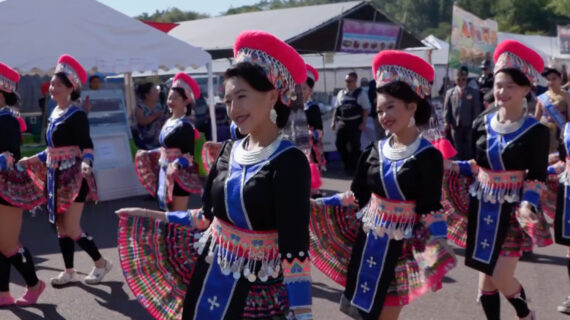
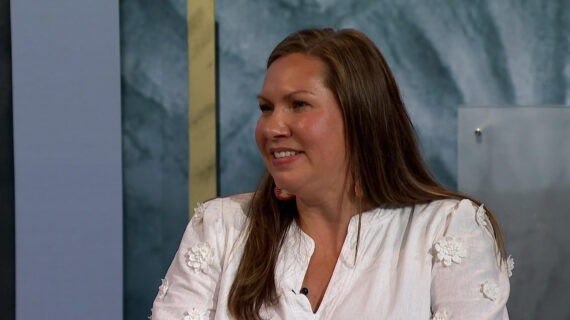

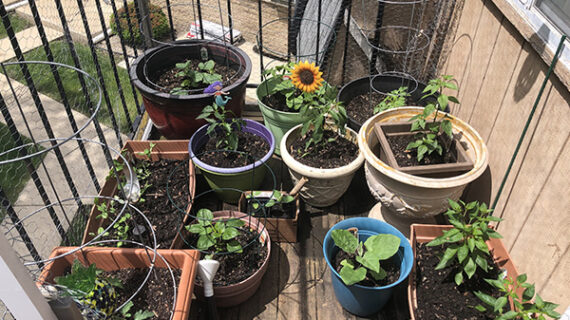

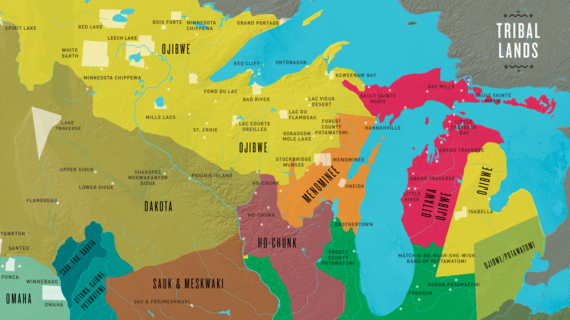
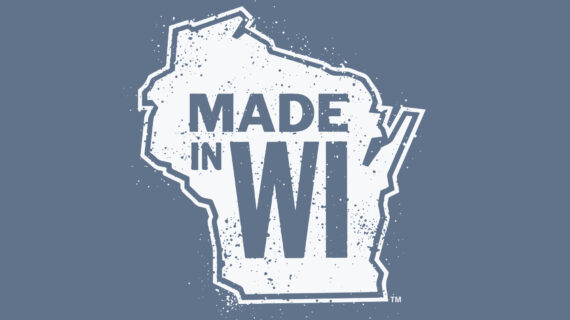
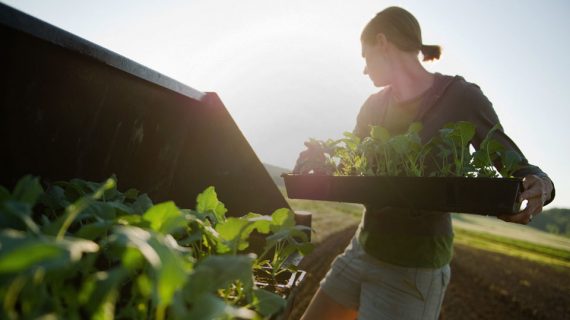
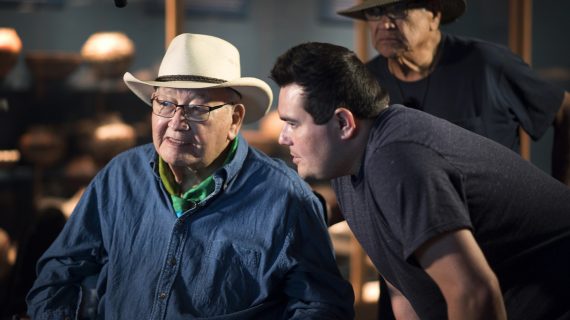

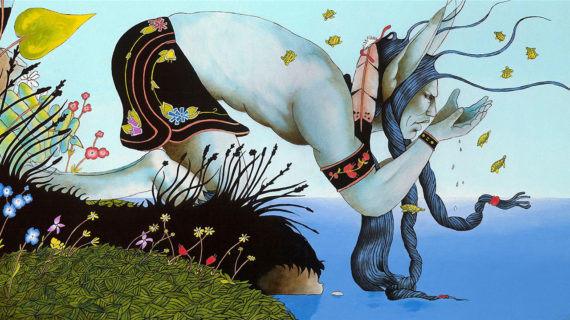

Follow Us